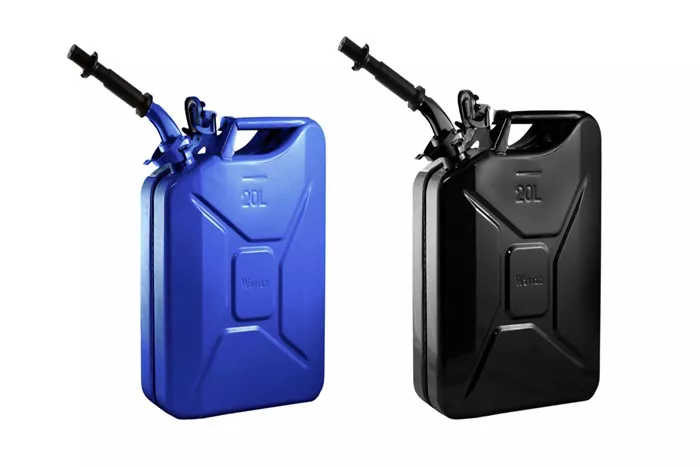Gasoline is a vital fuel for many vehicles and machines. However, storing gasoline can be tricky, especially in plastic containers. The longevity and safety of stored gasoline depend on several factors. In this article, we will explore how long you can store gasoline in a plastic container, the factors affecting its shelf life, and tips for safe storage.
The Shelf Life of Gasoline
Factors Affecting Gasoline Shelf Life
Gasoline does not last indefinitely. Its shelf life is influenced by several factors:
Type of Gasoline: Ethanol-blended gasoline (E10) has a shorter shelf life compared to non-ethanol gasoline.
Storage Conditions: Temperature, light, and humidity play significant roles in how long gasoline remains usable.
Container Material: The material of the container affects the gasoline’s longevity. Plastic containers are commonly used, but they have their pros and cons.
Additives: The presence of stabilizers and other additives can extend the shelf life of gasoline.
How Long Can Gasoline Be Stored in Plastic Containers?
Typical Shelf Life
Under ideal conditions, gasoline can be stored for:
Ethanol-Blended Gasoline (E10): 3 to 6 months
Non-Ethanol Gasoline: Up to a year
Impact of Plastic Containers
Plastic containers are convenient and widely used for gasoline storage. However, they are not perfect:
Permeability: Plastic is permeable to some extent, allowing gasoline vapors to escape and air to enter. This can lead to oxidation and degradation of the gasoline.
Chemical Reactions: Some plastics can react with gasoline over time, affecting its quality and safety.
See also: How Much Fuel Can You Legally Transport UK?
Tips for Storing Gasoline in Plastic Containers
Choose the Right Container
Approved Containers: Use containers approved for gasoline storage, such as those meeting the standards set by the U.S. Environmental Protection Agency (EPA) or the Department of Transportation (DOT).
Color and Labeling: Red containers are designated for gasoline. Ensure the container is clearly labeled to avoid confusion.
Proper Sealing
Tight Caps: Ensure the container’s cap is tightly sealed to minimize vapor loss and contamination.
Ventilation: Some containers have built-in vents to release pressure. Follow manufacturer guidelines for using these vents.
Storage Conditions
Cool, Dry Place: Store gasoline in a cool, dry place away from direct sunlight and sources of heat. High temperatures accelerate gasoline degradation.
Avoid Moisture: Moisture can lead to phase separation in ethanol-blended gasoline, reducing its effectiveness.
The Effects of Degraded Gasoline
Performance Issues
Using degraded gasoline can cause various problems:
Engine Knocking: Old gasoline can lead to engine knocking, reducing performance and potentially causing damage.
Starting Problems: Degraded gasoline makes it harder to start engines.
Fuel System Damage: Contaminants and degraded compounds can clog fuel systems, requiring costly repairs.
Safety Concerns
Storing gasoline improperly can be hazardous:
Fire Risk: Gasoline is highly flammable. Improper storage increases the risk of fire or explosion.
Health Hazards: Gasoline vapors are harmful if inhaled and can cause health issues.
Extending the Shelf Life of Gasoline
Use Fuel Stabilizers
Adding a fuel stabilizer can significantly extend the shelf life of gasoline. Stabilizers prevent oxidation and keep the gasoline fresh for longer periods.
Rotate Your Stock
First In, First Out: Use the oldest gasoline first to ensure none of it sits unused for too long.
Mark Dates: Label containers with the date of purchase or filling to keep track of the gasoline’s age.
Legal and Environmental Considerations
Regulations
Different regions have regulations regarding gasoline storage. Ensure you comply with local laws to avoid fines and ensure safety.
Disposal
Proper Disposal: Do not dispose of old gasoline down drains or in the trash. Contact local waste disposal services for proper disposal methods.
Recycling Programs: Some areas have recycling programs for old gasoline.
Conclusion
Storing gasoline in a plastic container can be convenient, but it requires careful attention to ensure safety and effectiveness. The typical shelf life of gasoline in a plastic container is 3 to 6 months for ethanol-blended gasoline and up to a year for non-ethanol gasoline. By using approved containers, adding stabilizers, and storing gasoline in optimal conditions, you can extend its shelf life and maintain its quality. Always prioritize safety and comply with local regulations to avoid hazards and environmental damage.
Related topics:
What Type Of Plastic Can Withstand Gasoline?

